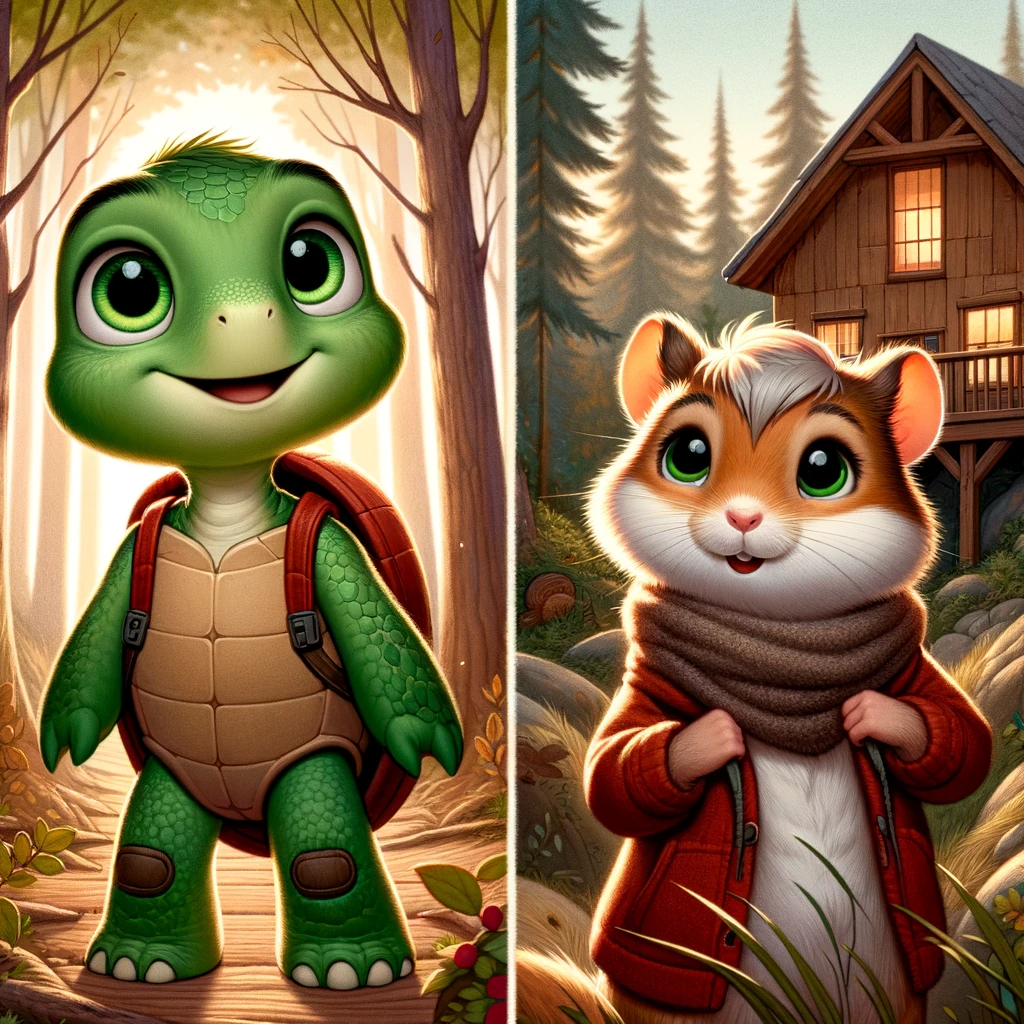Revolutionizing Storytelling: How I Created an AI-Powered Visual Novel for Children

Introduction to AI in Storytelling
In the realm of digital storytelling, the fusion of technology and creativity has opened new horizons. As a storyteller, I embarked on a fascinating journey to create a visual novel, harnessing the power of Artificial Intelligence (AI) to craft a narrative that resonates with children. My goal was to develop a story that emphasizes the importance of togetherness, particularly between siblings, using AI tools to enrich the experience. This project was not just about creating entertainment; it was about embedding educational and moral values into a format that is engaging and accessible for young minds.
Crafting the Story with ChatGPT-4
The heart of this visual novel is its story, centered around two siblings and their adventures in a forest filled with charming animal characters. To create this narrative, I utilized ChatGPT-4, an advanced AI language model. This tool enabled me to generate a story that not only highlights the bond between a brother and sister but also integrates educational elements seamlessly. The AI’s capability to understand and implement my emphasis on togetherness and moral lessons made the process efficient and effective, ensuring the story was both captivating and beneficial for children.
The Role of Custom ChatGPT in Story and Character Creation
In developing the story for my visual novel, the use of custom ChatGPT-4 models played a pivotal role, going beyond just crafting the narrative. Initially, I utilized a tailored ChatGPT model to weave the story around two siblings lost in a magical forest. This custom model was trained to focus on themes of togetherness and moral values, ensuring that every twist and turn in the story reinforced the bond between the brother and sister. The AI’s deep understanding of narrative structure and character development was instrumental in creating a storyline that was not only engaging but also resonated with educational objectives.
But the role of AI didn’t stop there. For character creation, I employed another customized ChatGPT model. This particular AI was fine-tuned to develop rich, multi-dimensional characters, each with their own unique traits and backstories. The sibling characters were designed to be relatable and inspiring, reflecting the nuances of real-life sibling relationships. The animal characters in the story, each with distinctive personalities, were also born from this AI’s creative capabilities. This level of detail in character development ensured that children could not only enjoy the story but also learn from the characters’ experiences and interactions.
Consistency matters
Furthermore, to maintain consistency in the visual representation of the story, I used yet another custom ChatGPT model, this time focusing on guiding the creation of scene images. This AI was instrumental in describing scenes in detail, ensuring that each image captured the essence of the story and remained true to the narrative’s context. It provided specific descriptions for the scenes – from the lush greenery of the woods to the expressions and actions of the characters – which were then brought to life through Dall-E 3. This consistent and detailed visual storytelling not only enhanced the aesthetic appeal of the novel but also helped in maintaining a coherent and immersive narrative flow.
The use of these specialized ChatGPT models exemplifies the versatility of AI in creative processes. By tailoring each AI to specific aspects of the story – narrative, character development, and visual consistency – I was able to create a holistic and engaging visual novel. This approach showcases how AI can be strategically employed to enhance different facets of storytelling, making it an invaluable tool for creators seeking to produce content that is not only entertaining but also educational and morally enriching.
Enhancing the Experience with AI-Generated Audio and Music
An immersive experience is incomplete without the right audio elements. For this, I turned to ElevenLabs and Pixabay. ElevenLabs’ AI-generated voices brought our characters to life, giving them distinct personalities that children could relate to and learn from. The background music, sourced from Pixabay and generated using AI, was royalty-free and perfectly complemented the narrative’s mood. These AI-generated audio elements not only enhanced the storytelling but also saved significant time and resources, demonstrating AI’s utility in creating high-quality, cost-effective educational content.
Visuals Brought to Life with Dall-E 3
To visually narrate the story, I employed Dall-E 3, an AI image generation tool. It allowed me to create unique, captivating images of the siblings and their animal friends in the woods. The ability of Dall-E 3 to translate my ideas into visually appealing art was crucial in making the novel engaging for children. These visuals were not just illustrations; they were tools to help young readers better understand and connect with the story’s themes.
AI as a Tool for Educational and Moral Storytelling
The integration of AI in creating this visual novel demonstrates its potential as a powerful tool in educational and moral storytelling. AI’s efficiency, versatility, and creativity-enhancing capabilities made it possible to produce content that is not only engaging for children but also imparts valuable lessons. This project is a testament to how AI can be leveraged by parents and educators to create meaningful, moral, and educational content, thereby playing a crucial role in shaping the minds of the next generation.